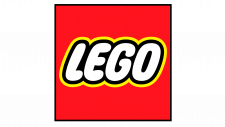S. C. Johnson & Son Logo
S. C. Johnson & Son, Inc., commonly known as SC Johnson, is a private American multinational corporation. Specializing in cleaning supplies, household items, and consumer chemicals, the company is renowned for its diverse range of products including air fresheners, floor wax, and home cleaning products. SC Johnson operates globally, with a significant presence in North America, Europe, and Asia. Notable brands under its umbrella include Glade, Raid, Mr. Muscle, and OFF!. As a family-owned business, it remains under the Johnson family’s control, with a strong emphasis on sustainability and corporate social responsibility. The company’s commitment to environmental and community initiatives is a key aspect of its business ethos.
Meaning and history
S.C. Johnson & Son, Inc. began in 1886 in Racine, Wisconsin. Initially, it produced parquet flooring. Samuel Curtis Johnson, Sr. was the founder. The company soon ventured into floor care products. By 1900, it was focusing on wax products for floors. The first diversification came in 1906 with a car polish.
During the 1930s, the company expanded globally. In 1938, third-generation H.F. Johnson pioneered wax research in Brazil. Post-World War II, S.C. Johnson introduced Raid insecticide and Glade air fresheners. The 1950s saw rapid expansion in product lines and international markets.
The 1980s marked a shift towards environmental responsibility. S.C. Johnson became a leader in sustainable practices. The company remained family-owned, with a Johnson family member usually at the helm. By the 21st century, it had become a global household name. The company consistently innovated while maintaining its commitment to family ownership and environmental stewardship.
What is S C Johnson & Son?
S.C. Johnson & Son, Inc., often known as SC Johnson, is a family-owned business specializing in household cleaning and consumer chemical products. Founded in 1886, it has grown into a global enterprise, famous for brands like Glade, Raid, and Pledge, while maintaining a strong commitment to sustainability and corporate responsibility.
1886 – 1888
The logo depicted is an intricate monogram design, intertwining the letters ‘S’, ‘C’ and ‘J’ in an ornate fashion. This artistic fusion is accentuated with swirling accents and leaf-like flourishes that add a classic, almost Victorian feel to the modern emblem. The color palette is simple yet sophisticated, with shades of brown and beige providing a timeless and professional appearance. Overall, the logo exudes an air of legacy and refinement.
1888 – 1911
This vintage logo from S.C. Johnson exudes historical charm, showcasing a detailed typographic style of the late 19th century. It features the company name in bold, embellished lettering, with “S.C. Johnson” prominently at the top. Below, in a more delicate font, are the services offered: “Parquetry, Fine Floors, Wainscoting, Laminated Woods,” indicating their early specialization. The text is framed by decorative elements that resemble architectural details, resonant of their flooring heritage. “Racine, Wis.” is neatly scribed at the bottom, establishing the company’s proud local roots. The entire image has a handcrafted quality, conveying tradition and craftsmanship.
1911 – 1939
This logo marks a bold departure from its predecessors, embracing a modern, graphic style. The monogram “SCJ” is stylized in a flowing, interconnected script, set against a striking black and yellow backdrop. The circular frame suggests unity and completeness. The design is clean and minimalistic, focusing on strong contrast and visual impact. The use of yellow is eye-catching, symbolizing energy and innovation. It’s a significant shift towards a more contemporary, iconic branding approach.
1939 – 1955
The image transitions from monogram-focused branding to a minimalist architectural silhouette. The design is a nod to the company’s headquarters, with layered, horizontal lines suggesting stability and progress. The use of a single color and abstract form reflects a mid-20th-century modernist aesthetic, emphasizing simplicity and forward-thinking. This logo communicates the company’s evolution and investment in design, both in products and in corporate identity.
1955 – 1958
The evolution in this image introduces bold contrast and a global motif. The iconic SC Johnson Research Tower is paired with a detailed globe, signifying the company’s worldwide reach and influence. This black and white depiction contrasts sharply with the previous monochromatic scheme, adding a dynamic visual element. The tower’s stripes and the globe’s meridians symbolize precision and global connectivity. This design reflects a post-war era of innovation and international expansion, emphasizing the company’s architectural legacy and global vision.
1958 – 1964
The design here simplifies to a clean, text-based logo with a geometric icon. “JOHNSON/S” is prominently displayed in bold, sans-serif type, emphasizing the brand’s name. The diagonal slash between “JOHNSON” and “S” suggests forward motion and innovation. The iconic diamond shape, colored in black and red, is a stark departure from the previous architectural and global elements, focusing on the brand rather than the company’s heritage. This minimalist approach reflects a mid-century modern design ethos, focusing on brand recognition and marketability.
1964 – 1974
This logo continues the minimalist trend, now integrating the iconic diamond shape directly into the letter ‘J’ of ‘Johnson.’ The typography is fluid and modern, with a rounded font that speaks to accessibility and friendliness. The color scheme is pared back to just black and a touch of red, focusing on visual clarity. This iteration is more playful and less formal, indicating a brand that’s evolving with contemporary design trends and consumer preferences. The simplicity of the logo ensures versatility across various platforms and products.
1964 – 1974
In this iteration, the logo adds the word “wax” to its design, reinforcing the company’s association with its core product. The font remains modern and rounded, yet “wax” is in a smaller, more understated typeface, ensuring “Johnson” remains the focal point. The iconic diamond remains embedded in the ‘J’, but now the visual balance shifts to highlight both the company name and its heritage in wax products. This logo iteration speaks to the brand’s legacy while maintaining a contemporary and clean aesthetic.
1974 – 1988
In this logo, “wax” now joins “johnson” in the same font size, signaling equal importance. The unified type size suggests a cohesive brand image. The diamond icon remains a central visual element, further integrating the brand’s heritage with its name. The overall design is streamlined and bold, capturing the essence of the brand’s identity in a straightforward, yet distinctive manner. This design choice reflects confidence and a clear brand message.
1988 – 1999
The updated logo introduces “SC” above the diamond motif, asserting the company’s initials alongside the established design. The red color of the diamond’s upper section adds a vibrant contrast to the monochrome text, capturing attention and reinforcing brand identity. The arrangement suggests a fusion of tradition with a modern, corporate image. The font for “Johnson wax” remains consistent with the previous design, maintaining brand continuity while the addition of “SC” provides a refreshed corporate identity.
1999 – 2018
The “wax” descriptor has been removed, simplifying the logo to “SC johnson,” which accentuates the company name. The font style remains consistent, ensuring brand recognition. The design focuses on the company initials and the distinctive diamond motif, now a symbol of the brand’s identity and legacy. This cleaner, more concise logo reflects a modern brand that values its heritage while streamlining its corporate image for a contemporary audience.
2018 – Today
The latest logo shifts to a striking red for the “SC” initials, infusing the design with vibrancy and energy. The “johnson” part remains in black, preserving the readability and balance. The absence of the diamond motif represents a significant departure, opting for a cleaner and more simplified appearance. This change could suggest a strategic move to modernize the brand and appeal to contemporary sensibilities while maintaining a connection to its legacy through color and bold typography.























